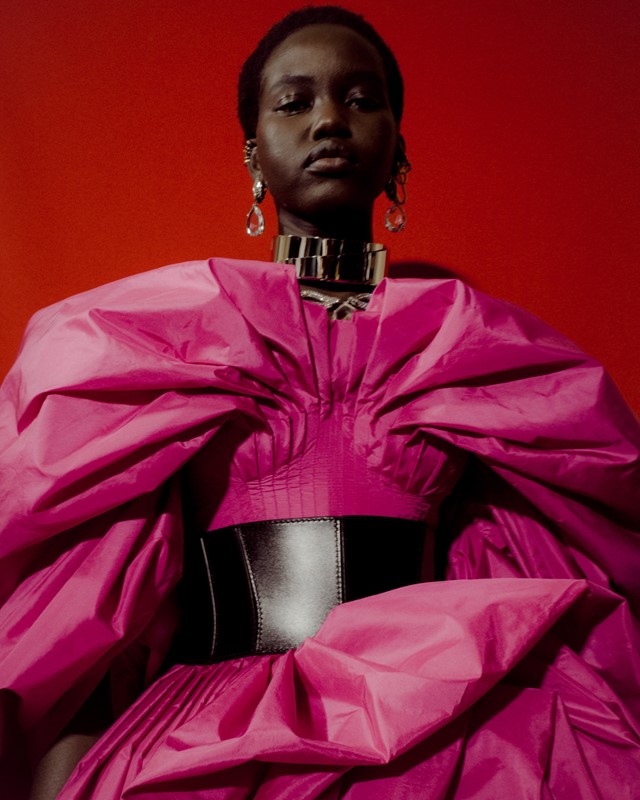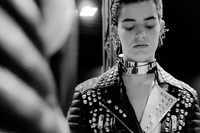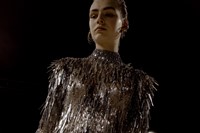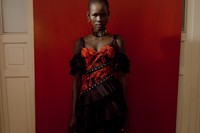A trip to her home town of Macclesfield set in motion a collection which explored the creation of fabrics, by both man and machine
Sarah Burton’s Autumn/Winter 2019 collection for Alexander McQueen began with a trip northwards: to Macclesfield, close to Manchester, where the designer was born. “I went home for this collection, back to where I grew up in the north of England, surrounded by mill towns and wild countryside,” she said in the show notes. “I took my team to those mills, to a landscape that I remember from my childhood. The heart of the collection is inspired by the bolts of cloth we saw woven both by man and machine.”
Those mills continue to create some of the most prestigious fabrics in the world, used primarily for the production of top-end men’s suiting in the UK and abroad (for evidence of quality, attendees to yesterday evening’s show needed look no further than where they sat, with great rolls of fabrics used in lieu of the usual rows of benches). Burton begun with suiting too, albeit for women, opening the collection with a sharply tailored masculine jacket – worn by model Binx Walton, star of the house’s Spring/Summer 2019 campaign – narrowed at the waist and cascading into a waterfall of fabric edged with a “Made in England” selvedge, worn with matching trousers. More masculine suiting followed, precise and linear: each pieced together from fabric woven in Britain’s mill towns.
But Burton trades in romance, too – previous collections have referenced the stories, myths and legends which have helped formulate British identity, and vary from county to county. Here, she referenced the Brontë sisters, whose novels seem to conjure the same wild, windswept romance as her clothing – and who are also tied to the north, albeit Yorkshire, geographically adjacent to Manchester (and similarly home to various mill towns, still in operation). Here, the sisters were imagined via a chiné gown, decorated with a bleeding rose print – its shape, a long skirt, pleated and the hem with a fitted bodice, Burton said was evocative of a Brontë heroine, wandering the Yorkshire moors (with footwear fit for task: lace-up leather booths with heavy tractor soles).
Roses – themselves imbued with meaning, from Shakespearean sonnet to the Red Rose of Lancaster (and carnival Rose Queens, as Burton referenced in the notes) – recurred throughout. Some were printed – then ripped apart and re-assembled – other red blooms appeared embroidered in lace alongside owls, cormorants and bees. Voluminous twists of black taffeta and red duchess satin resembled overblown roses, while a breathtaking fuchsia-pink gown – worn by Adut Akech – was the designer’s depiction of a rose in full bloom. Each demonstrated the remarkable capabilities of the McQueen studio under Burton, akin to that of a haute couture atelier.
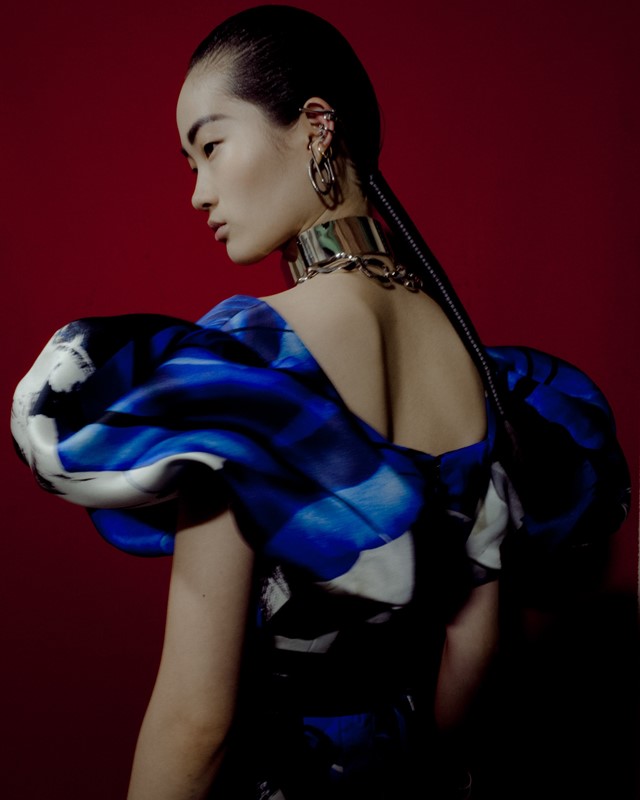
The collection ended with what appeared to be remnant’s from the mill floor – the metal heddles of the loom, used to separate the warp threads for the weft to pass through. But these were sequins, cut from metal into the same shape, embroidered on to a black tulle dress alongside bugle beads and glass stones. When the model moved, Burton said the sound evoked that of the mill room at work. It was a gown that encapsulated the journey of the collection: from humble beginnings, to extraordinary ends.
